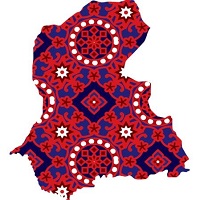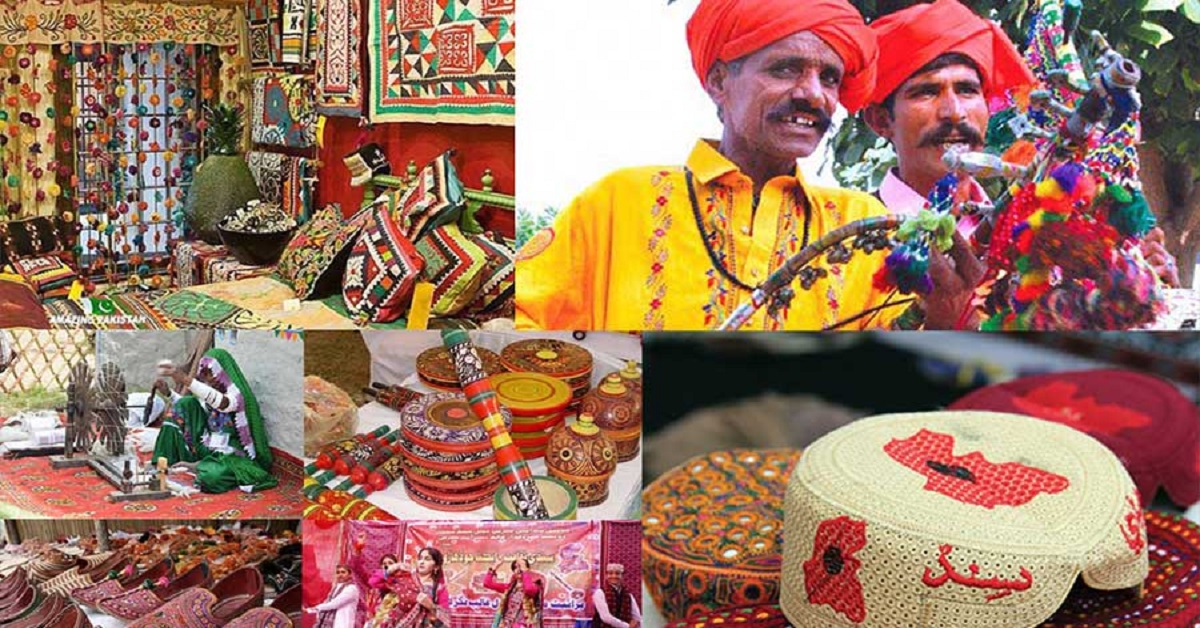Sindhi culture is rooted in the civilization of the Indus Valley. Sindh has been formed by a mostly deserted area, the natural resources available, and constant foreign influence. The Sindhu or Indus River, which passes through the region, and the Arabian Sea also fostered residents’ seafaring customs.
Local weather also highlights that the Sindhi have a dialect, lifestyle and folklore, lifestyles, and rituals that are very distinct from the surrounding regions. Sindhi Diaspora also practices Sindhi culture. This article has all the information about the culture, including Sindhi Culture History.
| Title | Description |
|---|---|
| Details | |
| Languages: | Sindhi |
| Festivals: | Eid-ul-Adha, Eid-ul-Fitr, Folk dance of Bhagat, folk dances, music |
| Province: | Sindh |
| Highest Temerature : | 53.5 A°C (128.3 A°F) |
| Area: | 140,915 Km |
| Sports: | Wanjh wati, Kodi Kodi, Beelarhoo, Thipai Rand, Notinn, Biloor,cricket,football |
| Urs of Hazrat Sachal Sarmast (R.A): | 13, 14, and 15th of Ramazan-ul Mubarak |
| Hazrat Lal Shahbaz Qalander (R.A): | 18, 19 and 20th of Shaaban |
| Urs of Hazrat Abdullah Shah Ghazi (R.A): | 20, 21 and 22nd of Zil Haj |
| Urs of Shah Abdul Latif Bhitai: | 14, 15 And 16th of Safar |
| Sindhi Topi and Ajrak Day: | First Sunday of December |
| Shrines in Sindh Pakistan: | Abdullah Shah Ghazi Karachi,Sachal Sarmast Khairpur,Lal Shahbaz Qalandar Sehwan Sharif,Shah Abdul Latif Bhitai Bhit shah |
| Famous Sindhi musicians: | Abida Parveen,Humera Channa,Allan Faqir,Shaman Ali Meerali |
| Sindhi sufi music: | Shah Jo Raag |
| Famous historical places: | Ranikot,kotdiji,umarkot,pacco qillo,naukot |
| Poet: | Talib-ul-Mola,Shah Abdul Latif Bhitai,Sachal Sarmast,Anwar Pirzada,Shaikh Ayaz,Qadir Bux Bedil,Imdad Hussaini,Elsa Kazi |
| In Urdu: | سندھی ثقافت |
Table of Contents
Sindhi Culture History
The origin of the culture of Sindh goes to the far post. Archaeological study during the nineteenth and twentieth century has shown the origins of the religion, social interaction, culture, and religion of the Sindhi people: their farming methods, traditional crafts and arts, customs and beliefs, and some other aspects of social life, dating back to the established Indus culture of the 3rd Millennium BC. The latest study has traced the civilization of Indus Valley to earlier ancestry.
Archaeological discoveries
The digging of ‘Mohenjo Daro’ revealed the urban life of the civilized society with morals, distinct culture, and heritage. Thus, the 1st description of a Sindhi civilization originates from more than seven thousand-year-old ‘Indus’ civilization.
It is a ‘pre-Aryan’ age, around three thousand years BC. At that time, Sindh’s urban culture was at its best. In the book of ‘Robert Eric Wheeler,’ Indus Valley civilization, it is stated that: ‘Civilization, in the minimal meaning of this word, is an art of residing in cities, along all that it means in terms of disciplines and social skills.’
When people talk about Sindh’s culture, they involve themselves, particularly with the concrete and material human inhabitation side. Together with a northern portion of ‘Indus Civilization’ (almost 3000-2500 BC), today’s Sindh is situated in its cityfied civilization. ‘Rannikot Fort’ is a hallmark of the culture of this valley.
It’s the most massive fort in the world, with walls expanding Twenty km. It was named China’s 2nd wall and invited a huge number of tourists.
Sindhi Culture Language
The Sindhi dialect is old and most affluent in literary work. Its authors have contributed widely to numerous styles of prose and poetry. The literature of Sindh is vibrant and the oldest literature in the world. The earliest and initial reference to the literature of Sindh can be found in Arab historians’ writings.
Translation of Quran in Sindhi
It is known that Sindhi was the 1st eastern dialect in which translation of the Holy Quran was done in the eighth or ninth century. A record exists of poets presenting their poetry before the Caliphs of Islam in Bagdad. It’s also known that the treatizes on history, medicine, and astronomy, were written and published in the Sindhi language during the eighth and ninth centuries.
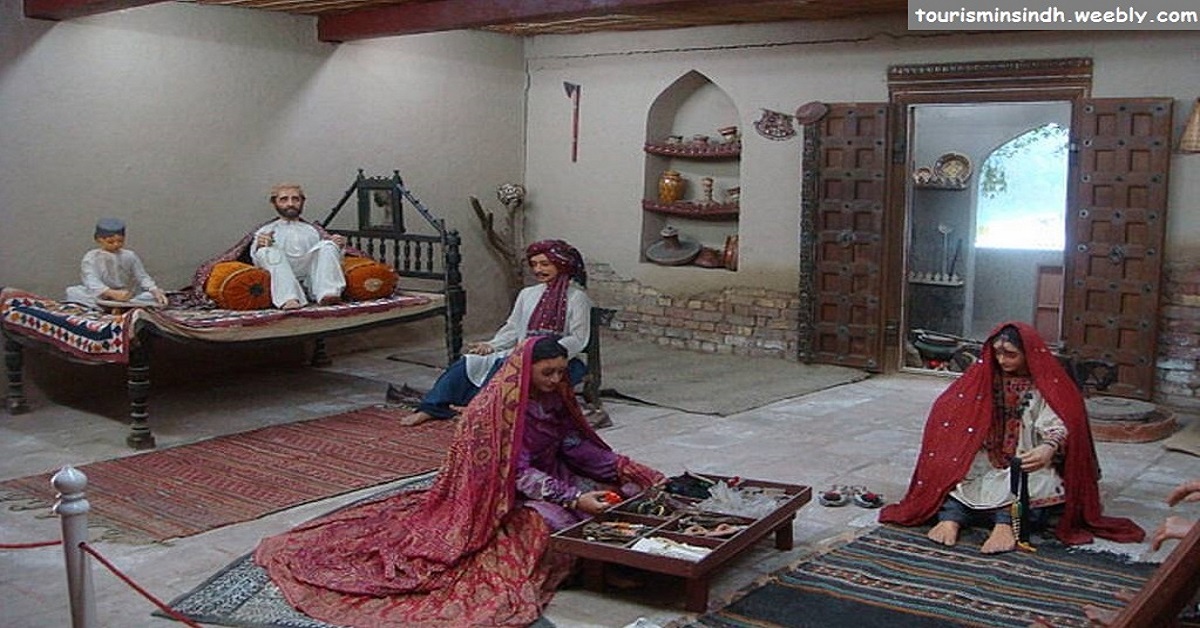
Cuisine
Sindhi cuisine means the native cuisine of the Sindhi population. In most households, the daily meal consists of wheat bread (phulka) and rice, followed by two dishes, one dry with pickle or curd and one gravy. Today, Sindhi cuisine is consumed in several countries, including India, where a large number of Hindu Sindhi emigrated after partition in 1947.
Sindhi Culture Food
Some foods are prepared for special events, such as:
Diwali a Bahji (vegetable meal)
It is called ‘Chiti-Kuni’ prepared with seven vegetables. Unique recipes are also prepared for recovery and healing from severe illness. For example, when anyone makes a complete recovery from Chicken Pox, it is customary to make an offer and make ‘mitho lolo,’ a delicious grilled flatbread.
The dough is made of wheat flour and oil or milk and sugar syrup. Sai bhaji chawal, a favourite Sindhi dish, includes white steamed rice consumed with spinach curry, having a tarka with garlic, onions, and tomatoes.
Koki
It is a popular flatbread made with wheat flour, is enjoyed well with any curd, dal, and sabzi.
Vermicelli
It is usually served as a sweet dish (sometimes milk-based) dessert, is popular: Muslim Sindhi is served on Eid ul-Fitr and Bakra-Eid. On important religious events, mitho lolo, together with milk, is offered to the needy.
Sindhi Kadhi
It is a special and unique dish prepared on special occasions, particularly by Sindhi, who live in India. It consists of a thick spicy gravy prepared from chickpea flour, not the buttermilk, which is typically used to prepare kadi together with the season’s vegetables. It’s eaten hot along with rice.
Kheer Kharkun
It is a sweet dish cooked and served on the Eid ul-Fitr, cooked with a mixture of milk and dates, and simmered for a few hours. The food is consumed hot in the winters and cool in the summers.
Taryal Patata
It is also known as ‘Took Aloo,’ a staple diet of Sindhis, is a type of thinly sliced, fried, or deep-fried ‘potatoes’ with different spices. They are typically served at dinner in most rural homes and served breakfast and lunch with other dishes. One common way for Sindhi to have ‘patatas’ is to consume it with white rice with a ‘daal’ to accompany it.
Pallo Machi
It is a famous Sindhi cuisine, which is ‘Hilsha fish’ cooked with various methods. It could be deep-fried and sprinkled with spices or prepared with potatoes and onions or barbequed. Fish is mostly roe, called ‘aani’ in Sindhi, and is eaten as a delicacy.
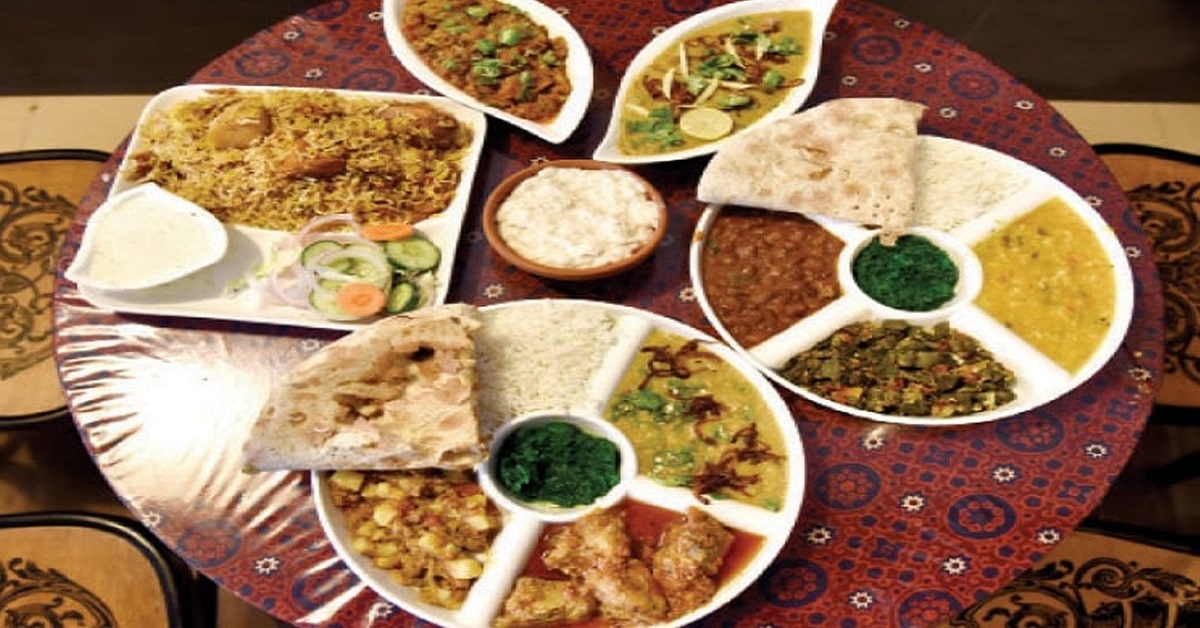
Poetry
Sindhi poetry is prevalent in the culture of Sindh. Shah Abdul Lateef and Sachal Sarmast’s poetry is very popular in Sindh.
Music
Sindhi music has a unique quality of its own. It’s presented in a variety of different forms. Sufi music is played in shrines, and simple music is played in assemblies and studios.
Sports
There are a lot of regional games played in Sindh. ‘ Malakhiro’ is among the most popular sports in Sindh. Other games include Kodi Kodi, Wanjh Wati, Thipai Rand, Beelarhoo, Biloor and Notinn, soccer, and cricket.
Cultural Character
‘Graceful, with a beautiful, slow gait and gentle, they are keen on the Gandharvas’ art (i.e., dance, music, and songs) and full of affection for the country.’
Cultural Day of Sindh
Sindhi celebrates the Sindh ‘Cultural Day’ annually on 1st December Sunday, wearing Sindhi Topi & Ajrak. Musical activities are organized in several cities to celebrate it with enthusiasm.
Way of Celebration
Major monuments in towns & cities are adorned with the ‘Sindhi Ajrak’ to depict Sindh’s cultural values. People throughout Sindh give presents of Topi and Ajrak at different ceremonies. Both the women and children are dressed in Ajrak, gathered at the grand event, where notable Sindhi musicians sing Sindhi compositions depicting Sindh’s love and development.
The artists’ musical performances urge the attendees to perform on Sindhi songs and ‘Jiye Sindh Jiye Sindh Waraa Jiyan.’
Activities Organized for Celebrations
Sindh’s religious, Social, and political Bodies, including the Sindh Cultural Department and the Administrations of different educational institutions, arrange various functions, including conferences, debates, drama and theatre shows, folk music events, academic sessions, and tableau to celebrate this annual festival. The heritage history and culture of Sindh are illuminated highlighted in these events.
Depiction by Ekta Day
The day of Ekta (Unity) shows the harmony between ‘Sindi-speaking’ populace; the event takes place in Karachi and Sindh.
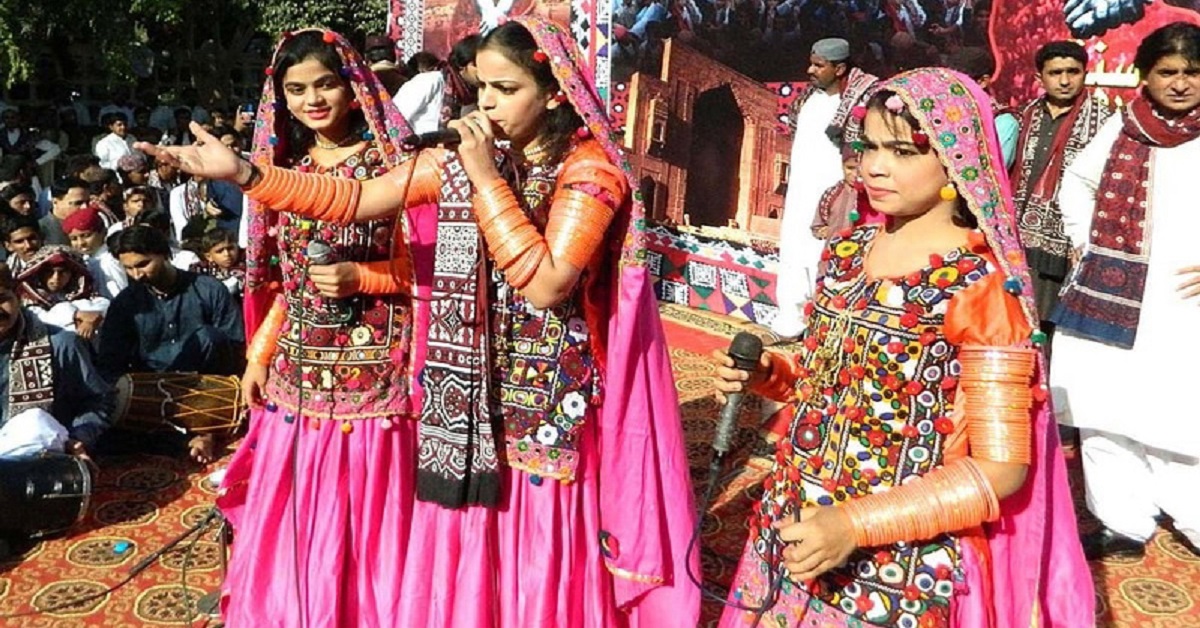
Reason for Celebrating Ekta Day
Solidarity and culture day of the province was held for the 1st time on 6th December 2009 (Sindhi ‘Topi’ Day) due to the remarks made by anchorperson Dr Shahid, who ridiculed Asif Ali (then president) for wearing the Sindhi cap during his International visits.
Sindhis criticized his remarks through messages, and it eventually led to the pronouncement of the celebration of the Sindhi ‘Topi’ Day. Also, Ali Kazi, a famous personality in Sindh, began issuing a notice to observe Unity’s Day. Many people replied to this announcement and began to celebrate the days of unity and culture. Since then, Sindhi media organizations have begun to mark the day as ‘Ekta Day.’
Role of Media
The Sindhi dialect Television networks, including Sindh TV, KTN, Mehran TV, and Awaz TV, telecast special shows on Sindhi culture. Besides these media organizations, organize separate mega-musical activities, which also catch huge crowds to observe Cultural Day every year.
Sindhi Language Television networks and political groups celebrated the 1st Ekta Day together on 8th December 2013.
